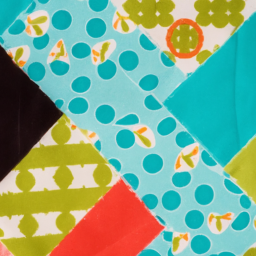
Introduction
Quilting is a wonderful art form that combines creativity and practicality. Whether you are a beginner or an experienced quilter, understanding how to read quilting patterns is essential. Quilting patterns provide the blueprint for creating stunning quilts, and by learning to interpret them, you can bring your quilt projects to life. In this article, we will walk you through the key elements of quilt patterns and provide some useful tips to help you along the way.
Understanding Quilting Patterns
Quilting patterns consist of various components that guide you through the process of creating a quilt. Here are the main elements you’ll encounter:
Fabric Requirements
Patterns usually specify the amount and type of fabric required for each quilt. Take note of different fabric colors and patterns needed to achieve the desired design.
Cutting Instructions
Quilt patterns include precise cutting instructions for each piece of fabric. These instructions provide measurements, angles, and shapes, helping you achieve accurate and consistent pieces.
Assembly Diagrams
Assembly diagrams illustrate how to piece together the fabric units. They often incorporate arrows, colors, or numbers to indicate the order of assembly. Pay close attention to these diagrams to ensure your pieces are properly aligned.
Block Layout
The block layout shows how all the quilt blocks come together to form the complete quilt. It gives you an idea of the final arrangement and helps you visualize the overall design.
Quilting and Finishing Instructions
Quilt patterns also provide guidance on how to quilt and finish your project. This includes information on quilting techniques, border measurements, binding instructions, and any additional embellishments or details.
Tips for Reading Quilting Patterns
- Read the pattern instructions thoroughly before starting your project.
- Keep a notebook or use sticky notes to help you keep track of your progress and any modifications you make.
- Double-check all measurements and cutting instructions before cutting your fabric.
- If you’re a beginner, start with simple quilt patterns and gradually move on to more complex designs as you gain confidence.
- Join quilting communities or take classes to learn from experienced quilters and gain valuable insights.
- Experiment with different fabric choices and color combinations to personalize your quilt.
- Enjoy the process and don’t be afraid to make mistakes – they often lead to beautiful, unexpected results!
Great article!
Kenzie Grace: This looks really helpful!
This is an invaluable resource for anyone looking to start quilting! From beginners to more advanced quilters, this article will help with understanding how to interpret pattern instructions and diagrams and learn some basic quilting techniques.
Sounds incredibly useful!